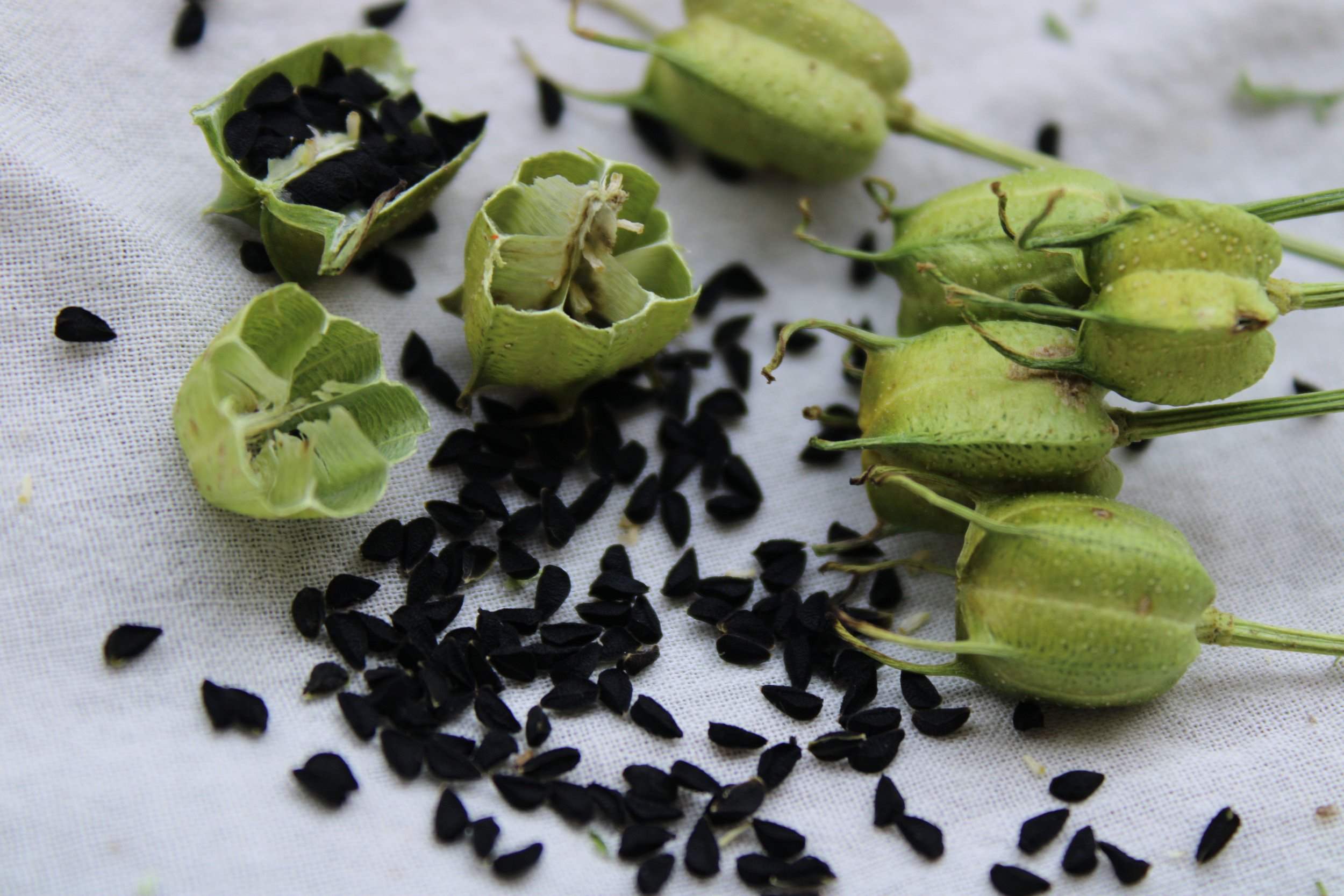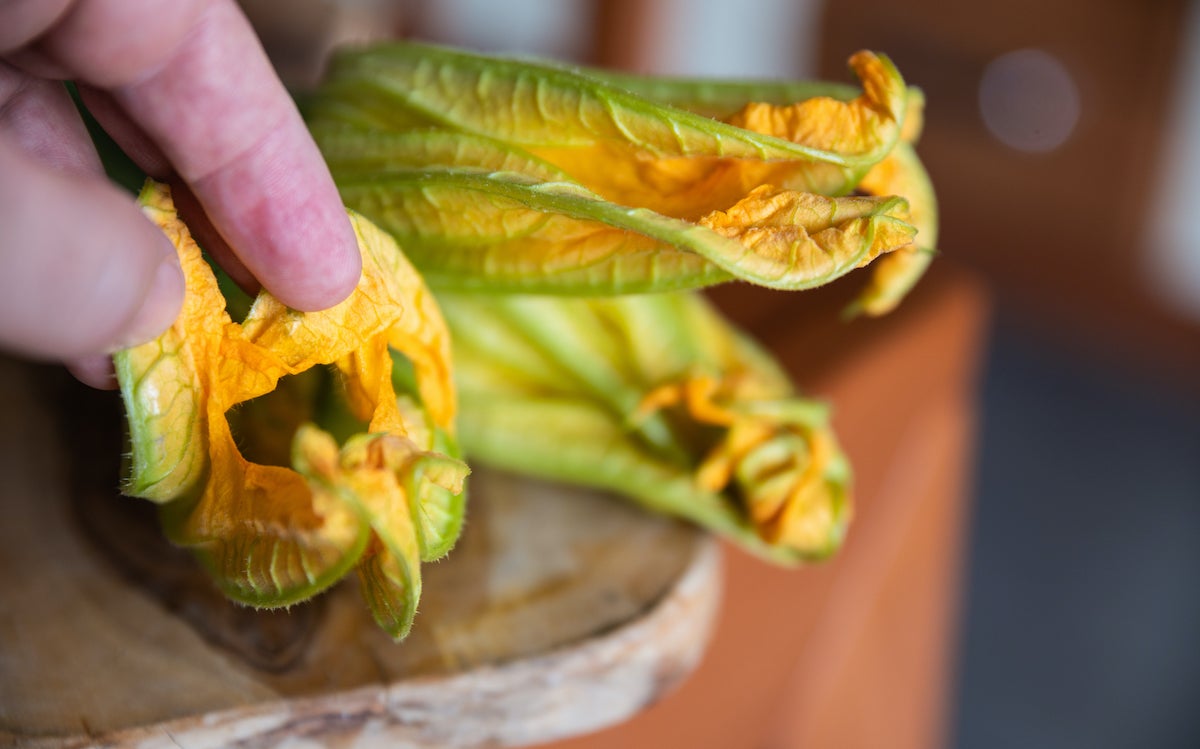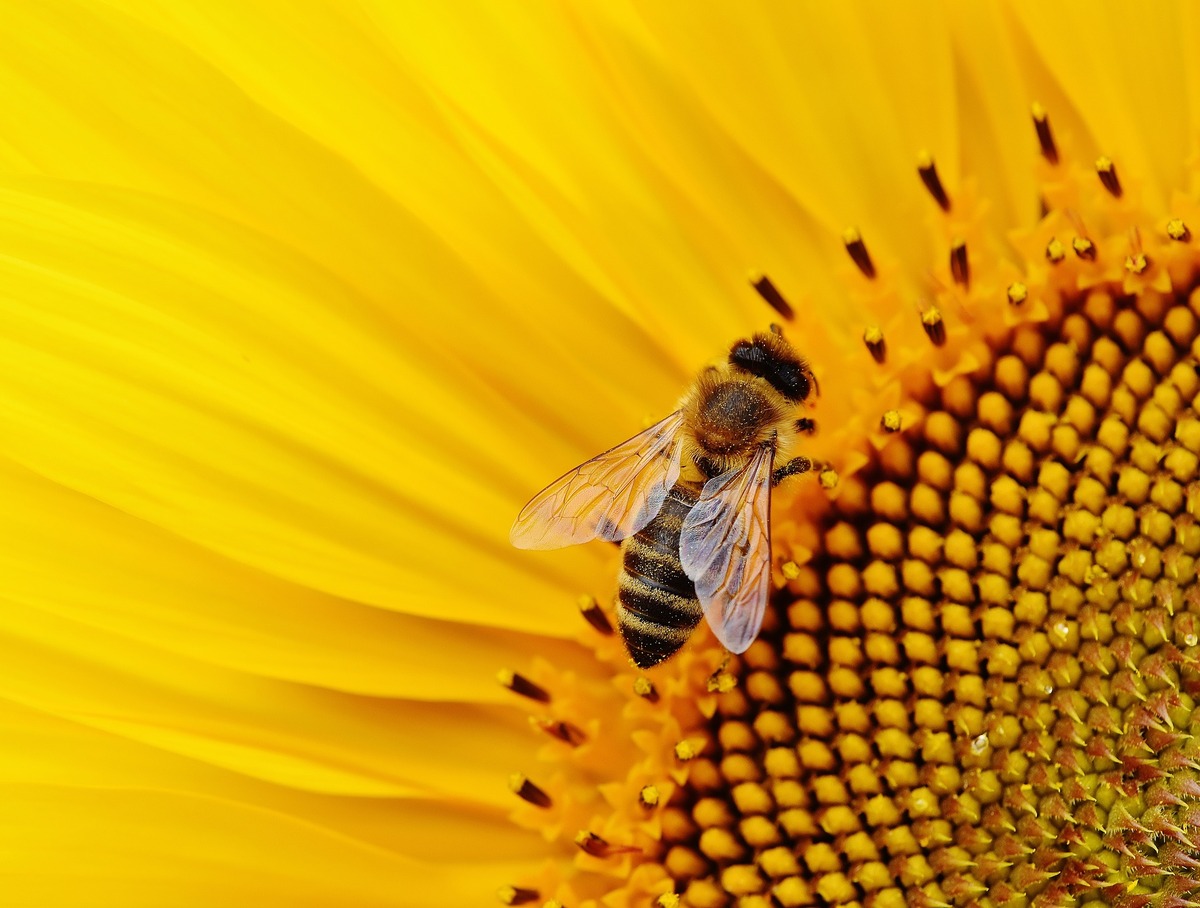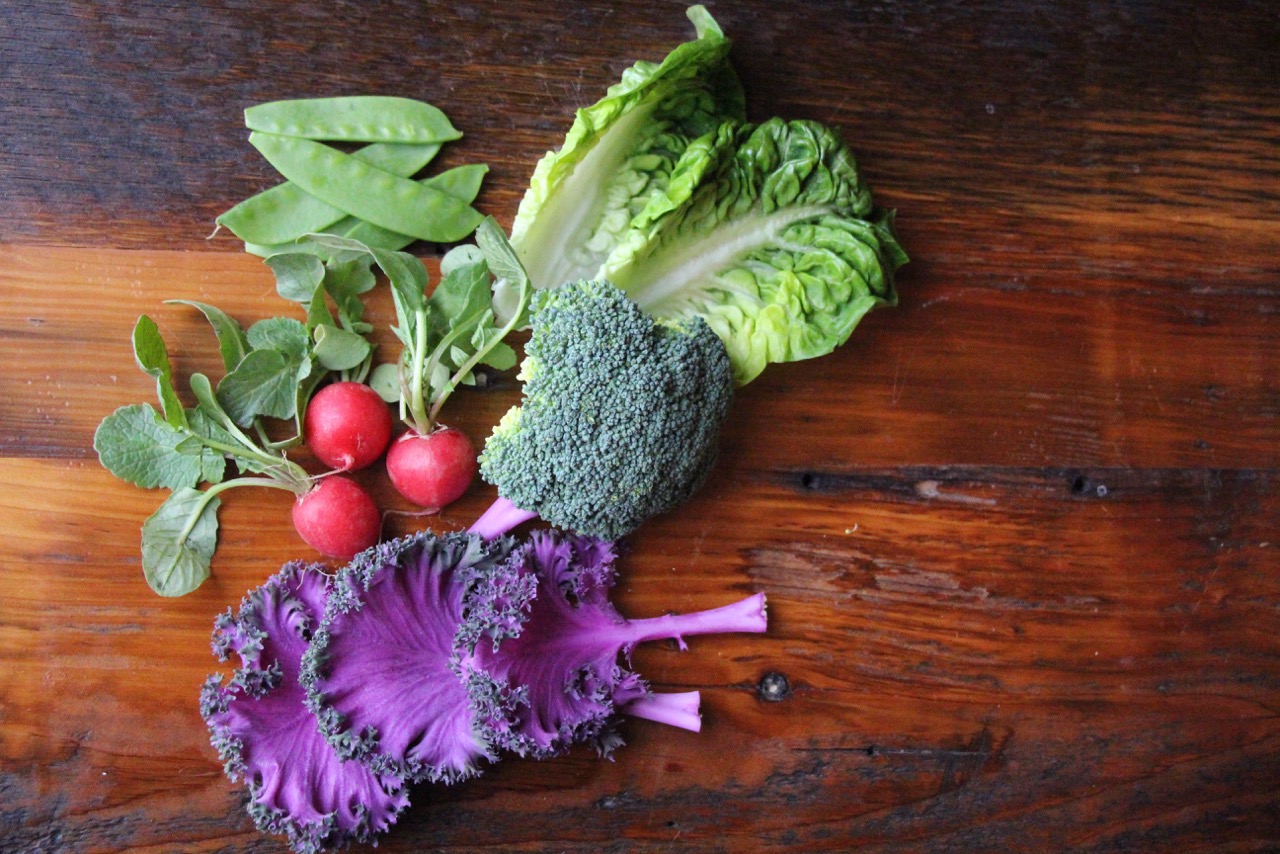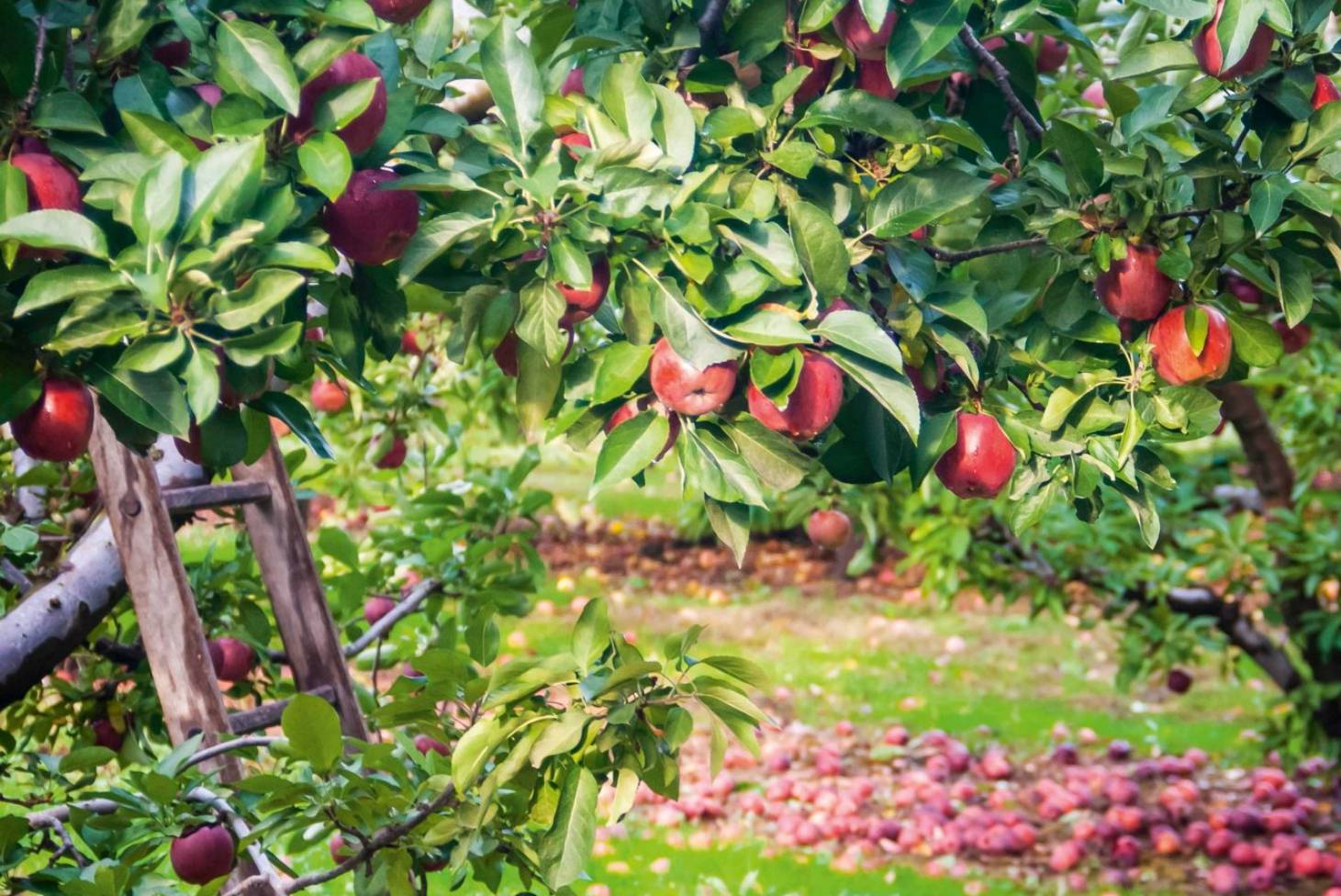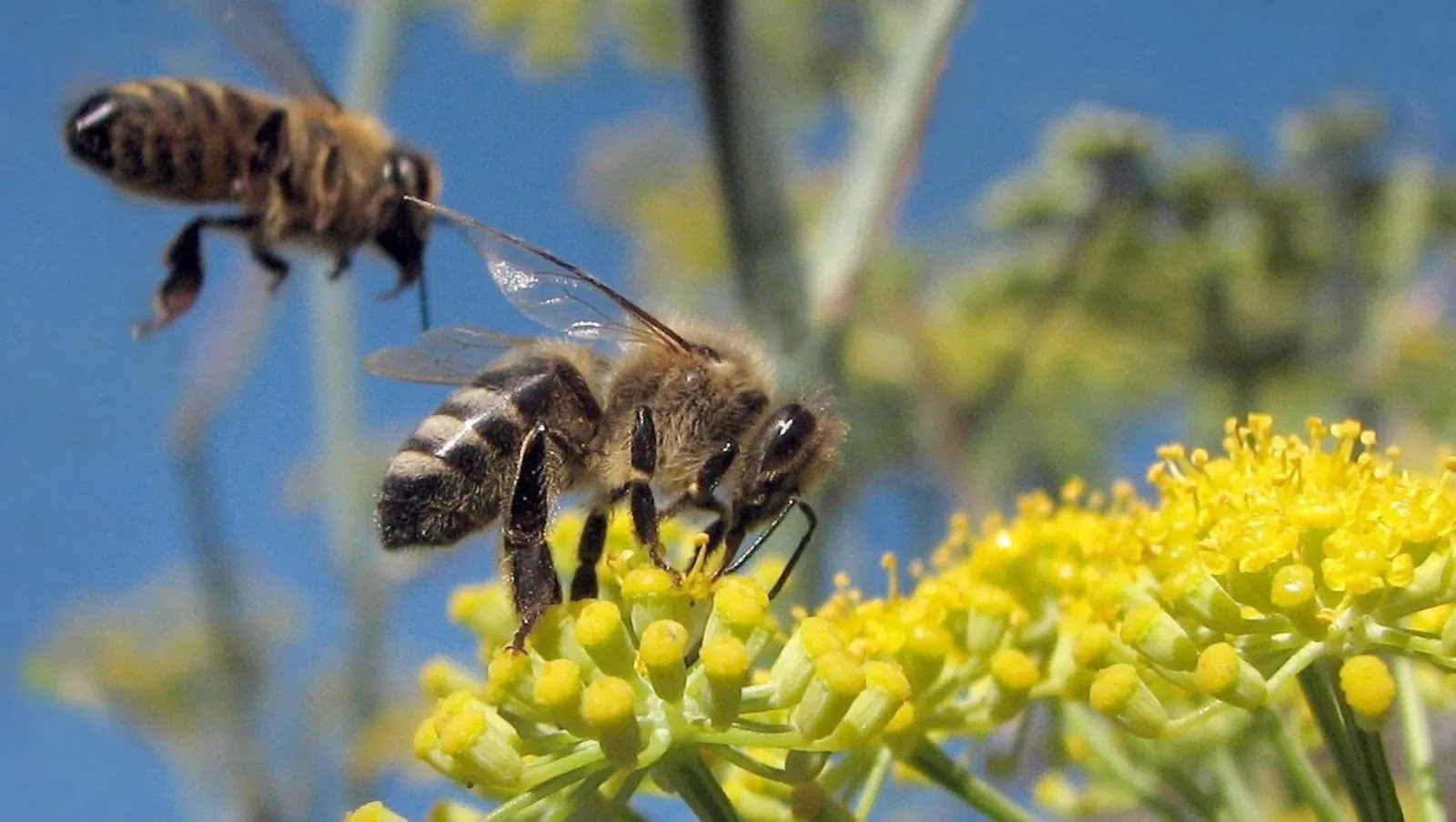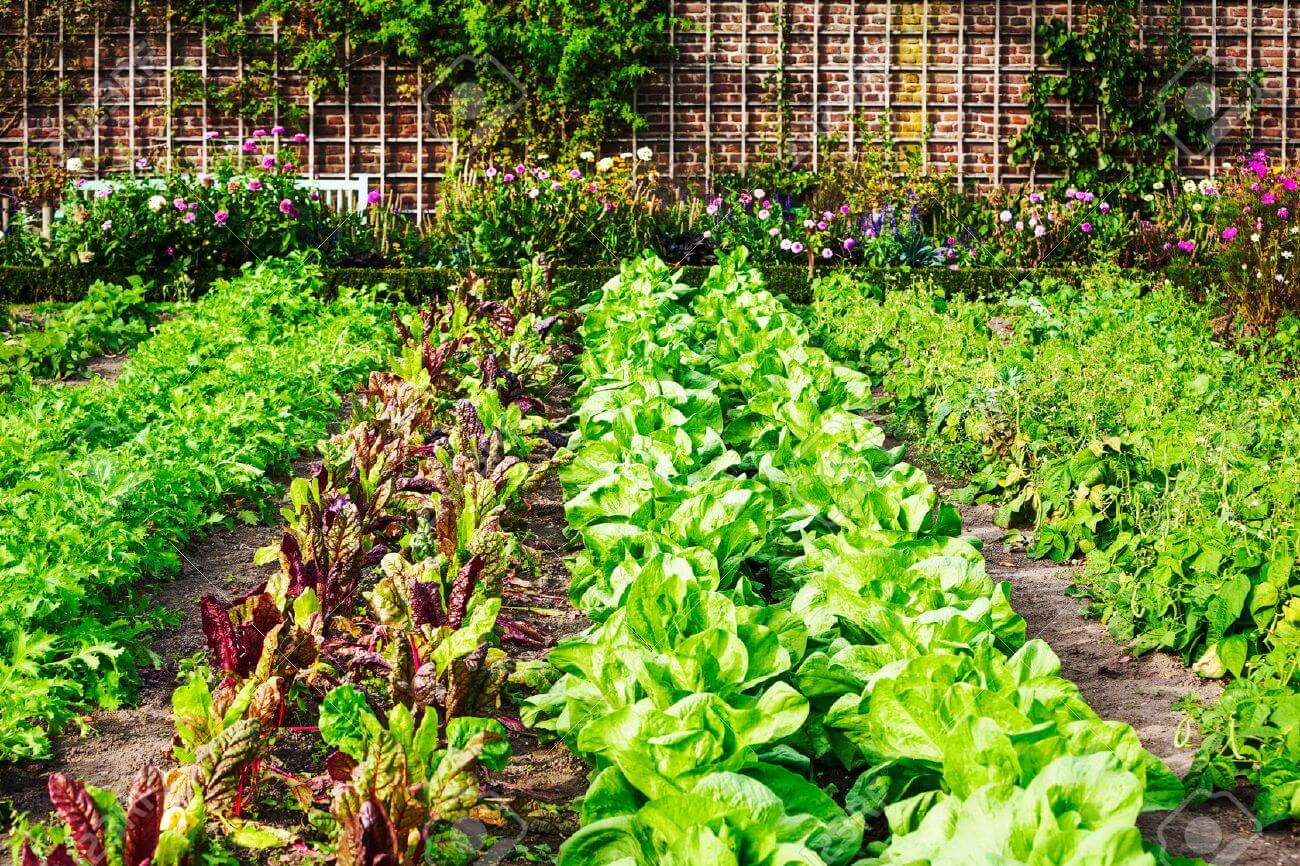Home>Gardening Tips and Tricks>Problem Solving>What Trees Are Pollinating Right Now


Problem Solving
What Trees Are Pollinating Right Now
Modified: January 22, 2024
Discover effective problem-solving techniques to identify the trees currently in pollination and resolve any related issues. Find expert tips and guidance to tackle this seasonal challenge.
(Many of the links in this article redirect to a specific reviewed product. Your purchase of these products through affiliate links helps to generate commission for Chicagolandgardening.com, at no extra cost. Learn more)
Table of Contents
- Introduction
- Understanding Tree Pollination
- Factors Affecting Tree Pollination
- Common Trees Pollinating During Spring
- Common Trees Pollinating During Summer
- Common Trees Pollinating During Fall
- Common Trees Pollinating During Winter
- Importance of Tree Pollination
- Impact of Climate Change on Tree Pollination
- Conclusion
Introduction
When you step outside on a beautiful spring day, you may notice a sweet scent in the air. That’s the aroma of tree pollen, carried by the breeze, as trees spread their genetic material to reproduce. Tree pollination is a fascinating natural process that is essential for the survival of many plant species.
Understanding tree pollination involves examining the various factors that influence this process. From the environmental conditions to the specific trees involved, there are many intricate details at play. By delving into the world of tree pollination, we can gain a deeper appreciation for the role that trees play in our ecosystem.
Throughout the year, different trees take their turn in pollinating. Spring, summer, fall, and even winter all have their own sets of pollinating trees. Each season brings forth a unique blend of scents and colors as these trees perform their reproductive duties.
In this article, we will explore the different trees that are pollinating during each season. We will discuss the factors that affect tree pollination and the importance of this process. Additionally, we will delve into how climate change is impacting tree pollination and what we can do to mitigate these effects.
So, whether you have allergies or simply enjoy the beauty of nature, join us as we embark on a journey to discover what trees are pollinating right now, and explore the intricate world of tree pollination.
Understanding Tree Pollination
Tree pollination is the process by which trees reproduce and spread their seeds. It involves the transfer of pollen from the male reproductive structures of one tree, known as the stamen, to the female reproductive structures of another tree, known as the pistil. This transfer can occur through various means, including wind, insects, birds, or other animals.
One of the key factors in tree pollination is the production and release of pollen by the male trees. These trees produce tiny, lightweight pollen grains that are easily carried by the wind or other pollinators. The female trees, on the other hand, have structures called stigma which receive the pollen and facilitate fertilization.
While wind is a common method of pollen transfer, some trees have evolved specialized adaptations to attract specific pollinators. For example, certain trees produce brightly colored flowers and sweet nectar to attract bees and other insects. These insects unknowingly help transfer the pollen as they seek nectar, ensuring the survival and diversity of the tree species.
Additionally, the timing of tree pollination depends on the species and environmental factors. Some trees may pollinate in early spring, while others wait until summer or fall. Understanding the timing of tree pollination is important for both researchers and individuals who may have allergies or are interested in the natural world.
Pollination is a necessary step for trees to reproduce and create new generations. Without pollination, there would be no fruits, nuts, or seeds produced by these trees, resulting in a decline in their populations. Moreover, the ecosystem as a whole relies on tree pollination, as it provides food and habitat for numerous other species, including insects, birds, and mammals.
By understanding the intricacies of tree pollination, we can appreciate the complexity and beauty of nature’s reproductive processes. It is a remarkable symbiotic relationship between trees and their pollinators that ensures the continuation of life and the diversity of our planet.
Factors Affecting Tree Pollination
Tree pollination is influenced by a variety of factors that play a crucial role in the success of this reproductive process. From environmental conditions to the availability of pollinators, these factors can significantly impact the outcome of tree pollination.
The first and perhaps most important factor is the weather. Temperature, humidity, and wind play a vital role in determining when and how tree pollination occurs. For wind-pollinated trees, such as pine or oak trees, a gentle breeze is necessary to carry the lightweight pollen grains from the male trees to the female flowers. However, excessive winds or heavy rain can disrupt this process and hinder successful pollination.
Next, the availability and effectiveness of pollinators greatly influence tree pollination. Bees, butterflies, birds, and even bats can act as vital carriers of pollen, ensuring its transfer between trees. The presence of an adequate population of pollinators, as well as the diversity of pollinator species, increases the chances of successful pollination. Loss of habitat and pesticide use can impact pollinator populations, leading to a decline in tree pollination and subsequent fruit or seed production.
The genetic compatibility between the trees also affects pollination success. Trees of the same species or closely related species are more likely to have successful pollination, as their genetic makeup aligns. Cross-pollination between different tree varieties can lead to the creation of hybrid offspring with unique traits and adaptations.
Additionally, tree health and vitality play a crucial role in pollination. Trees that are stressed, diseased, or lacking proper nutrition may have reduced flower production or poor-quality pollen. This can result in lower pollination success rates and negatively impact the overall reproductive capabilities of the tree population.
Finally, the proximity and arrangement of trees can affect pollination. Trees that are spaced too far apart may limit the accessibility of pollinators to transfer pollen effectively. Similarly, certain tree species have specific requirements for successful cross-pollination, such as the need for compatible tree varieties to be nearby.
These factors collectively contribute to the intricate web of tree pollination, highlighting the delicate balance between environmental conditions, pollinators, and the overall health of the tree population. Understanding and mitigating the factors that can negatively impact tree pollination is essential for the continued survival and diversity of our forests and ecosystem.
Common Trees Pollinating During Spring
As winter fades away and the days grow longer, spring brings forth new life and vibrant colors. It is a time when many trees awaken from their dormant state and begin their journey of pollination. Spring is a season of renewal, and numerous tree species take advantage of the milder temperatures to release their pollen and complete their reproductive cycle.
One of the most iconic spring-blooming trees is the cherry blossom, or Prunus. These beautiful trees, with their delicate pink or white flowers, create a breathtaking display that symbolizes the arrival of spring in many cultures. Cherry blossoms are predominantly pollinated by bees, which are attracted to the nectar-rich flowers. Their pollination is essential for the production of cherries later in the year.
Another notable spring pollinator is the apple tree, a member of the Rosaceae family. Apple trees produce clusters of fragrant white or pink blossoms that are pollinated by a variety of insects, including bees, flies, and butterflies. The buzzing activity around apple orchards during spring is a testament to the crucial role these pollinators play in fruit formation.
The dogwood tree is another spring-blooming beauty. Its iconic four-petaled flowers, ranging in color from white to pink and even red, attract bees and butterflies. Dogwood trees often grow in the understory of forests and provide an important food source for wildlife during the spring season.
Maple trees are also known for their spring pollination. These magnificent trees produce clusters of small flowers, often in shades of yellow or green. Pollinated by wind, maple trees produce an abundance of pollen that helps fertilize their female flowers and facilitate the production of maple seeds, or samaras.
Other common trees pollinating during spring include birch, hawthorn, redbud, and willow. Each of these trees contributes to the symphony of colors and scents that define the spring season, as well as provide food and habitat for various animals.
Spring is a time of new beginnings, and the pollination of these trees ensures the continuation of their species through the production of fruits, seeds, and nuts. It is a critical period for many tree populations, as successful pollination sets the stage for the next generation and the cycle of life to continue.
Common Trees Pollinating During Summer
With the arrival of summer, the landscape undergoes a transformation as trees burst into full bloom, showcasing their vibrant colors and enticing scents. Summer is a season of abundance, and many tree species take advantage of the warm weather to spread their pollen and complete the process of pollination.
The oak tree, a revered symbol of strength and longevity, is one of the most prevalent trees pollinating during the summer months. Oaks produce small, inconspicuous flowers that are wind-pollinated. The tassels of flowers release copious amounts of pollen that is carried by the wind, ensuring the pollination of neighboring oak trees. Oaks play a crucial role in supporting a rich biodiversity of insects and birds that rely on their acorns for food.
Another prominent summer pollinator is the linden or basswood tree. These trees produce clusters of fragrant, creamy-colored flowers that attract a wide array of pollinators, including bees, butterflies, and hummingbirds. Lindens are excellent honey plants, and their blooming period provides a much-needed nectar source for bees, contributing to the production of high-quality honey.
The catalpa tree is known for its showy white flowers with purple or yellow markings. These flowers, often referred to as “Indian bean trees,” are highly attractive to bees and other insects. Catalpas are also renowned for their large, bean-like seed pods that appear later in the season.
One tree species that captures attention with its colorful array of flowers is the mimosa tree. Mimosa trees, also known as silk trees, display fluffy, vibrant pink blossoms that are hard to miss. These flowers attract bees and butterflies with their copious amounts of nectar, ensuring successful pollination.
Crape myrtle trees are summer bloomers that add a burst of color to gardens and landscapes. These trees produce dynamic clusters of flowers in shades of pink, purple, red, and white. Pollinated by bees and butterflies, crape myrtles offer a visual spectacle during the hot summer months.
Other common trees pollinating during summer include magnolia, sycamore, locust, and buckeye. Each tree contributes to the summer landscape, providing beauty, shade, and habitat for a diverse range of wildlife.
Summer is a season of energy and vibrancy in the natural world, and the pollination of these trees ensures the continuation of their species. As these trees release their pollen, they create a spectacle of colors and attract a myriad of pollinators, reminding us of the interconnectedness of nature and the importance of tree pollination in the cycle of life.
Common Trees Pollinating During Fall
As the summer heat fades and the leaves begin to change color, fall brings a stunning display of vibrant hues to the landscape. It is a season of transition, and many trees take advantage of this time to release their pollen and complete their reproductive cycle before the arrival of winter. While fall is often associated with leaf color change, the pollination of various tree species also adds to the beauty of this season.
One of the most notable fall pollinators is the goldenrod. These tall, yellow-flowered plants are abundant in fields and meadows, adding a brilliant burst of color to the autumn landscape. Goldenrod relies mainly on insects, especially bees and butterflies, for its pollination. These pollinators are attracted to the abundant nectar and inadvertently transfer pollen as they move between flowers.
The tupelo tree, often referred to as the “black gum” tree, is another prominent fall pollinator. Tupelo trees produce small clusters of inconspicuous flowers, but their nectar is highly sought after by bees. Tupelo honey, known for its unique flavor and rarity, is produced by bees that forage on the nectar-rich blossoms of tupelo trees.
The hickory tree is well-known for its edible nuts, but it also plays a role in fall pollination. Hickory trees produce small, yellow-green flowers that are pollinated by wind. These inconspicuous flowers release their pollen, which is carried by the wind to neighboring hickory trees for successful pollination.
Another tree that contributes to fall pollination is the witch hazel. These deciduous trees or shrubs bloom with fragrant, spidery flowers in shades of yellow and orange, providing a striking contrast to the autumn foliage. Witch hazel flowers are unique in that they bloom during the fall months, making them an important late-season food source for bees and other pollinators.
The persimmon tree is also known for its fall pollination. These small to medium-sized trees produce bell-shaped flowers that attract bees and other insects. The successful pollination of persimmons leads to the formation of sweet, orange-colored fruits, a delightful autumn treat.
Other common trees pollinating during fall include birch, ash, walnut, and maple. The pollination of these trees not only contributes to the beauty of the fall season but also ensures the production of seeds, nuts, and fruits that are important food sources for wildlife.
Fall is a season of transition and abundance, and the pollination of these trees adds to the splendor of this time of year. As fall arrives, take a moment to appreciate the intricate dance between trees and their pollinators, and the important role they play in the cycle of life.
Common Trees Pollinating During Winter
Winter is often perceived as a quiet and dormant time in nature, but even during the cold months, some trees continue their reproductive processes. While the number of trees pollinating during winter is relatively low compared to other seasons, there are still a few notable species that contribute to the pollination cycle.
One prominent winter-blooming tree is the witch hazel. With its unique ability to flower during the colder months, the witch hazel stands out against the barren winter landscape. Their delicate, fragrant blooms in shades of yellow or orange provide a much-needed source of nectar for pollinators such as bees, flies, and even the occasional butterfly.
The alder tree is another common tree that pollinates during winter. These deciduous trees produce small, cone-like structures known as catkins. Within these catkins, tiny flowers release their pollen. The wind carries this pollen to other alder trees for pollination, ensuring the production of seeds later in the year.
Winter-blooming cherry trees are also known for their early flowering during the colder months. These trees produce delicate white or pink blossoms that contrast beautifully against the winter scenery. While they may not have an abundance of pollinators during winter, they can still rely on the occasional visit from early emerging bees and insects.
Additionally, certain evergreen trees like pine, cedar, and spruce have a different method of pollination. Rather than relying on showy flowers or attracting pollinators, these trees produce inconspicuous male cones that release pollen when conditions are right. The wind carries this pollen to the female cones on the same or neighboring trees, allowing for the fertilization and subsequent production of pinecones.
While the number of trees pollinating during winter may be fewer compared to other seasons, their contribution to the reproductive cycle is significant. Despite the cold temperatures and scarcity of pollinators, these trees have evolved unique strategies to ensure their survival and the continuation of their species.
Winter pollination serves as a reminder of the resilience and adaptability of trees in the face of challenging conditions. It highlights the interconnectedness of seasons and the importance of preserving the diversity of tree species, even during the harshest months of the year.
Importance of Tree Pollination
Tree pollination is of paramount importance for the health and vitality of our ecosystem. It plays a crucial role in the reproduction and survival of trees, as well as the overall biodiversity of our planet. Understanding the significance of tree pollination helps us recognize the interconnectedness of all living beings and the intricate balance of nature.
One of the primary reasons tree pollination is important is the production of fruits, nuts, and seeds. Many trees rely on pollination for the formation of these reproductive structures, which serve as essential food sources for animals and humans. Fruits and nuts not only provide nourishment for wildlife but also contribute to the biodiversity and ecological stability of an area.
In addition to providing food, tree pollination also facilitates the dispersal of seeds. As animals consume fruits or nuts, they unknowingly transport seeds to new locations, aiding in forest regeneration and the expansion of tree populations. This process ensures the continuity of tree species and their adaptation to changing environments.
Beyond direct benefits, tree pollination supports a diverse range of ecosystems. By attracting pollinators such as bees, butterflies, birds, and other insects, trees contribute to the proliferation of these species. The exchange of pollen between plants promotes genetic diversity and strengthens the overall resilience of ecosystems.
Moreover, tree pollination is crucial for the creation and maintenance of habitats. Trees provide shelter, nesting sites, and food sources for numerous animals. The presence of a healthy and diverse tree population enhances biodiversity and promotes a thriving ecosystem.
Furthermore, the economic value of tree pollination cannot be ignored. Many crops, both wild and cultivated, depend on pollinators for successful reproduction. Bees, for instance, are estimated to contribute billions of dollars to global agricultural output through their pollination services. Tree pollination boosts agricultural productivity and supports the sustainability of farming systems.
Additionally, the beauty and cultural significance of flowering trees cannot be overlooked. The visual splendor of blooming trees, such as cherry blossoms in spring or colorful autumn foliage, attracts tourists and provides inspiration for art, literature, and cultural celebrations. Tree pollination enhances the aesthetic appeal of our surroundings and enriches our connection with nature.
Overall, tree pollination is essential for the functioning and well-being of our planet. It shapes our landscapes, provides food and habitat for countless species, and contributes to the overall stability and resilience of ecosystems. Recognizing the importance of tree pollination encourages us to protect and conserve our natural resources and foster a harmonious relationship with the environment.
Impact of Climate Change on Tree Pollination
Climate change is having a profound impact on our planet, and tree pollination is not immune to its effects. The shifting climate patterns, altered temperatures, and changing weather conditions brought about by climate change are disrupting the intricate balance of tree pollination processes, with potentially far-reaching consequences for plants, animals, and ecosystems.
One of the major impacts of climate change on tree pollination is the disruption of phenological events. Phenology refers to the timing and synchronization of biological events in nature, such as flowering and pollination. Rising temperatures and erratic weather patterns can cause shifts in the timing of these events, leading to mismatches between the availability of flowers and the presence of their pollinators. This can result in reduced pollination success rates and a decline in fruit or seed production.
The warming climate is also affecting the range and distribution of both trees and their pollinators. Many tree species have specific temperature requirements for optimal growth and reproduction. With changing climate conditions, the suitable habitats for these trees may shift. However, their pollinators may not be able to adapt or migrate at the same pace, leading to a loss of mutualistic relationships and potential declines in both tree and pollinator populations.
Additionally, climate change can impact the behavior and abundance of pollinators. Some studies have suggested that elevated CO2 levels in the atmosphere can alter the chemical composition of flowers, affecting their attractiveness to pollinators. Changes in temperature and precipitation patterns can also influence the availability of nectar and the timing of flowering, affecting the foraging habits and migration patterns of pollinators.
The loss of habitat and changes in plant-pollinator interactions due to climate change can also result in decreased genetic diversity within tree populations. Limited pollination, hybridization, or the loss of specific pollinator interactions can reduce the genetic variability within tree species, making them more vulnerable to disease, pests, and other stressors.
Furthermore, extreme weather events associated with climate change, such as hurricanes, droughts, or heatwaves, can cause physical damage to trees or disrupt pollinator populations. These events can have immediate and long-term effects on tree pollination, impacting the overall reproductive success and survival of tree species.
The impact of climate change on tree pollination is a cause for concern, as it has far-reaching implications for ecosystems, biodiversity, and the provision of ecosystem services. Protecting and preserving the habitats of both trees and their pollinators, implementing sustainable land management practices, and reducing greenhouse gas emissions are crucial steps toward mitigating the negative effects of climate change on tree pollination.
Conclusion
Tree pollination is a fascinating and essential process that contributes to the health and vitality of our planet. From the delicate cherry blossoms of spring to the resilient trees pollinating during winter, each season brings its own unique display of colors and scents. Understanding the factors affecting tree pollination, the importance of this process, and the impacts of climate change on it is crucial for our appreciation of nature and the preservation of our ecosystems.
Tree pollination plays a vital role in the reproduction of trees and the production of fruits, nuts, and seeds. It ensures the continuation of tree species, supports biodiversity, and provides food and habitat for countless animal species. The interdependence between trees and their pollinators highlights the intricate and delicate balance of nature.
However, climate change poses significant challenges to tree pollination. Shifting phenological events, disruptions to plant-pollinator relationships, and altered habitats all impact the reproductive success and genetic diversity of trees. The consequences of these changes can have far-reaching effects on ecosystems and the services they provide.
Recognizing the importance of tree pollination and its vulnerability to climate change emphasizes the need for conservation efforts and sustainable practices. Protecting the habitats of both trees and their pollinators, promoting biodiversity, and reducing greenhouse gas emissions are crucial steps towards ensuring the continued success of tree pollination and the well-being of our planet.
As individuals, we can contribute by planting native tree species, supporting pollinator-friendly practices, and advocating for sustainable land management. By nurturing the connections between trees and their pollinators, we preserve the beauty, diversity, and resilience of our natural world.
So, the next time you admire the blossoming trees or enjoy the fruits of their labor, take a moment to appreciate the intricate dance of tree pollination—a process that sustains life and connects us to the wonder of nature.
